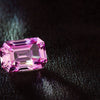
What is an Old European Cut Diamond: Unveiling Vintage Brilliance
An Old European cut diamond is a beautiful example of craftsmanship that bridges the historical gap between the old mine cuts of the 19th century and the modern round brilliant cuts that are prevalent today.
Developed during the late 1800s to early 1900s, this cut reflects an era when diamonds were transitioning from being hand-cut to benefiting from machine-assisted cutting technology. What distinguishes the Old European cut is its round shape, crafted for optimizing brilliance and fire—even in the low light conditions that were common prior to electricity.
Table Of Contents
- Historical Context of Old European Cut Diamonds
- Characteristics of Old European Cut Diamonds
- Aesthetic Appeal and Uniqueness
- Choosing Old European Cut Diamonds for Jewelry
- Technical Specifications and Grading
- Value and Investment Considerations
- Care and Maintenance of Old European Cut Diamonds
- Cultural and Personal Significance
- Technological Advancements in Diamond Cutting
- Comparative Analysis
- Sustainability and Ethical Considerations
- Future Trends and Evolution
- Purchasing Channels and Vendors
- Frequently Asked Questions
The allure of the Old European cut lies in its soft, round edges and the deep sense of history it embodies. Each stone possesses a unique character with its typically high crown, small table, and a large, open culet that gives this antique diamond its distinctive look.
In terms of facets, it normally features 58, like the modern round brilliant; however, these are chunkier and arranged differently. This cut emphasizes a diamond's luster, warmth, and depth rather than the flashy brilliance we often associate with contemporary cuts.
While the precise faceting pattern of an Old European cut diamond results in less sparkle than seen in round brilliant cuts, it offers a sophisticated and romantic glow that holds a special charm.
These diamonds are cherished by collectors and those seeking vintage engagement rings with a story. Their timeless appeal continues to resonate with individuals who value a connection to the past and the artistry these diamonds represent.
Historical Context of Old European Cut Diamonds
When I discuss Old European cut diamonds, I'm referring to a distinctive style of diamond cutting that emerged toward the end of the Victorian era and gained prominence through the Edwardian and Art Deco periods. It's a precursor to modern brilliant cuts but with its own charm and history.
Development and Evolution
The Old European cut diamond has its roots in the late 1800s, evolving from earlier styles such as the Table, Rose, and Old Mine cuts. This cut reflects artisans' endeavors to enhance sparkle and brilliance in candlelight conditions.
Antique Old European cuts typically showcase a round shape, a small table, a high crown, and a large, open culet. More often than not, they feature fewer facets than modern brilliant cuts—typically 58—and their handcrafted nature means each diamond is unique.
This cut came about in an era devoid of electric lights, which is primarily why its facets are arranged to maximize the diamond's ability to capture light. The emphasis was on depth and color to draw the eye into the stone, offering a different kind of fire and scintillation compared to modern cuts.
Influence of Art Deco and Edwardian Eras
During the Edwardian and Art Deco eras, the popularity of Old European cut diamonds surged. The Art Deco era, in particular, celebrated geometric and symmetrical designs in antique jewelry, accompanying the Old European cut diamonds with intricate filigree and milgrain detail. Vintage enthusiasts often seek this cut for its historical allure and handcrafted individuality.
In the Art Deco era, bold and innovative designs demanded these older cuts, blending both the romanticism of the past and the excitement of the modern age. The Old European cut diamonds were highly prized for their unique reflection of elegance and sophistication, characteristics that were paramount in Art Deco jewelry.
The influence of these periods on the cut was significant, as the demand for luxury goods during the prosperous times led to improvements in cutting techniques and the eventual evolution into the modern round brilliant cut post these eras. Even today, Old European cut diamonds remain sought after, prized for their antique charm and timeless sophistication.
Characteristics of Old European Cut Diamonds
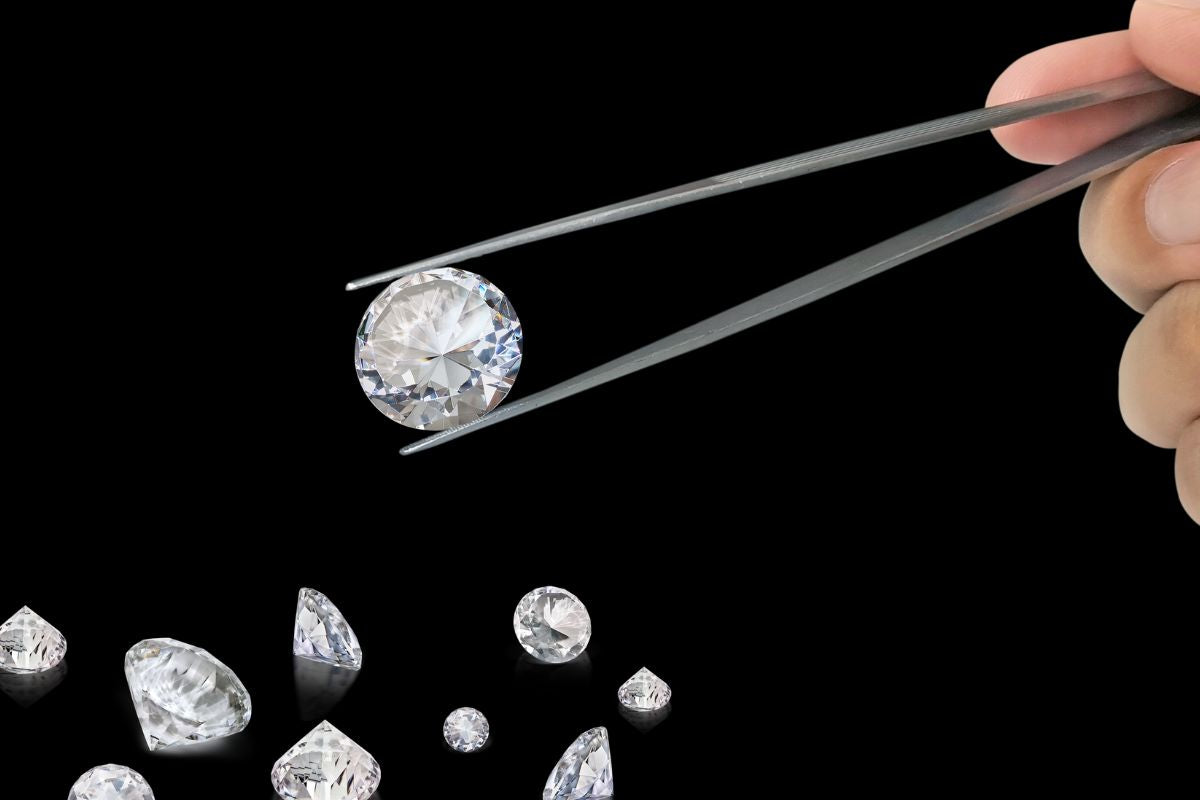
|
Aspect |
Old European Cut Diamonds |
|---|---|
| Origin | Originated in the late 19th and early 20th centuries, primarily in Europe. |
| Cut Characteristics | Features a round shape with a smaller table, high crown, and open culet, producing a distinctive sparkle and brilliance. |
| Facets | Typically has 58 facets, including a large, flat facet on the bottom called the culet. |
| Brilliance | Known for producing a unique "chunky" or "flashy" appearance due to its larger facets and deeper pavilion. |
| Historical Significance | Considered a vintage or antique cut, valued for its historical charm and rarity. |
The Old European cut diamond is a historically significant style that embodies the charm of antique craftsmanship. These diamonds, well known for their distinct character and romantic appeal, differ notably from modern cuts.
Facet Pattern and Symmetry
The facet pattern of Old European cut diamonds is defined by a series of 58 facets: a small table, a high crown, deep pavilion, and large, chunky facets. This culminates in a less structured and more random appearance of light reflection, known as brilliance and fire.
While these diamonds may lack the precision of modern cuts, their symmetrical arrangement is still a marvel of their time, aiming to maximize the inner fire and sparkle with the technology available.
Culet and Crown Attributes
A distinctive aspect of the Old European cut is the presence of a large culet, which is visible when viewed directly from the top as a small circle at the bottom of the diamond. The crown is typically high, contributing to the overall depth of the diamond and enhancing the stone's capacity to disperse light. These attributes collectively impart a softness and depth to the diamond that is less common in contemporary cuts.
Comparison with Old Mine and Modern Cuts
In comparison to its predecessor, the Old Mine cut, the Old European cut features a more rounder shape and smaller table, which differentiates it from the slightly more square-shaped Old Mine cut diamond with its larger facets. When juxtaposed with the round brilliant cut, which boasts cut grades and 58 facets like the Old European, the round brilliant’s facets are arranged for optimal light performance, highlighting advanced precision in cutting for maximum clarity and fire. Transitional diamonds emerged as an intermediate step, reflecting a shift towards the precision and consistency seen in today’s cuts.
Aesthetic Appeal and Uniqueness
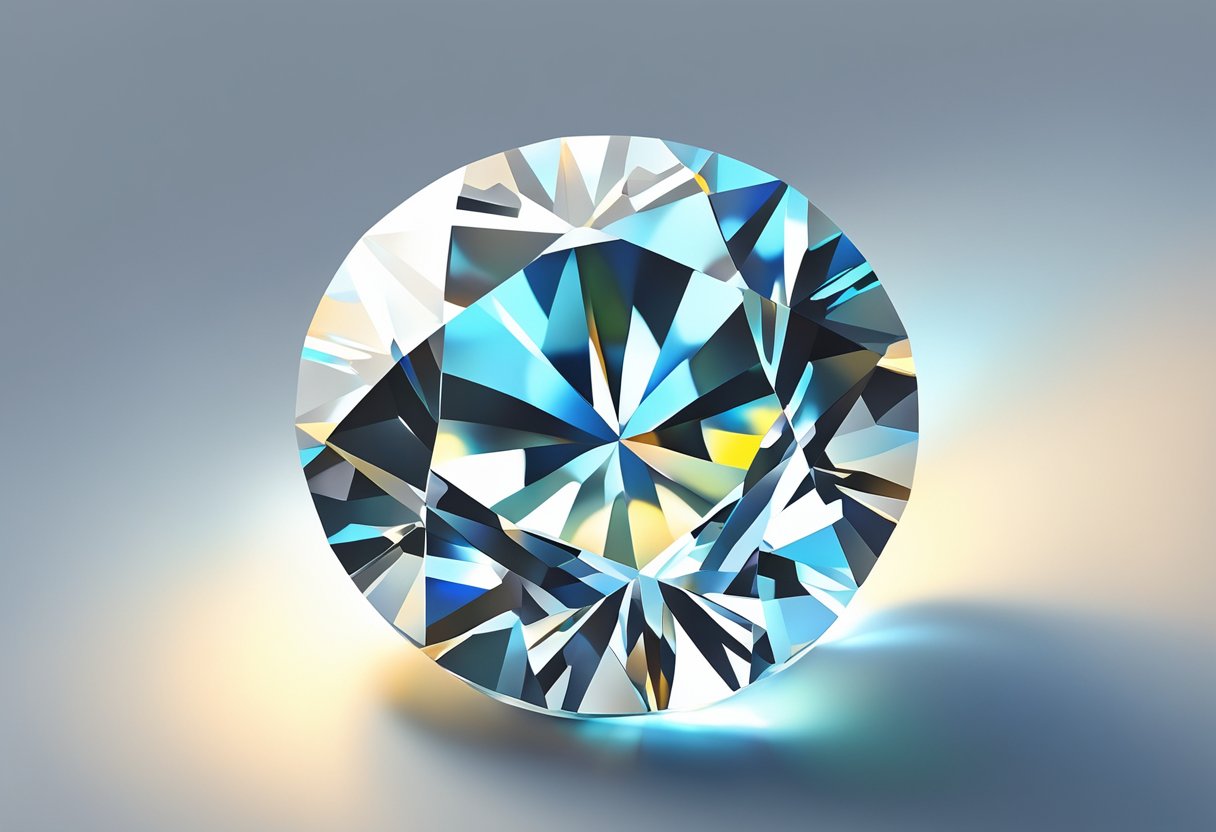
The Old European cut diamond is renowned for its unique charm and alluring brilliance. This vintage gem reflects an era where precision met the personal touch of skilled artisans.
Beauty and Brilliance
I appreciate the beauty and brilliance of the Old European cut diamond, which is characterized by its round shape with a high crown, small table, and large culet.
The cut's primary intention is to maximize brilliance and sparkle under the softer, ambient lighting conditions of the time, notably candlelight.
Each facet of the Old European cut diamond is hand-cut, which adds to the uniqueness of each stone. The cut often results in a certified color grade that emphasizes a warm, soft glow within the diamond, which many find contributes to its aesthetic appeal.
Craftsmanship and Hand-Cut Nature
Discussing craftsmanship, I must note the Old European cut embodies an artisanal technique that predates modern cutting methods.
Artisans in the late 19th and early 20th centuries cut these diamonds by hand, valuing the individual character of each stone over the conformity found in mass production.
The Old European cut is a predecessor to modern brilliant cuts and hails from an era known for the Art Deco style, which reveres geometric patterns and precise lines.
Yet the slight variances in each handcrafted gem render a vintage allure that can't be duplicated by contemporary, machine-assisted techniques. This hand-cut nature ensures that the light performance of each diamond is as unique as the artisan who crafted it.
Choosing Old European Cut Diamonds for Jewelry
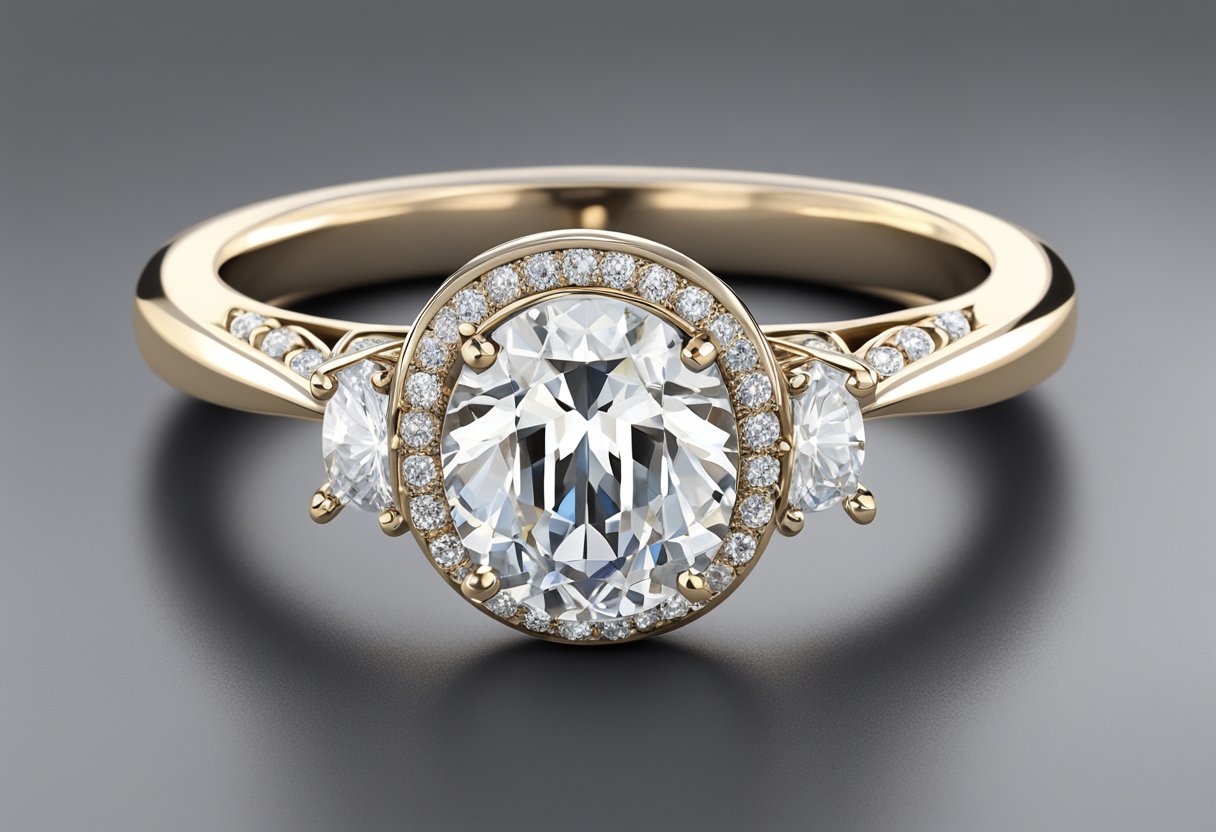
Selecting an Old European cut diamond for jewelry merges historical allure with personal taste. In my experience, the charismatic depth and unique charm of these vintage stones create a distinctive choice for those who value tradition and elegance.
Engagement Rings and Settings
When contemplating an Old European cut diamond for an engagement ring, I often recommend considering a setting that enhances the diamond's vintage charm.
Filigree and solitaire settings, which focus on showcasing the diamond, can accentuate the stone's heritage. Vintage settings, often replete with intricate metalwork, marry beautifully with the Old European cut to exemplify a timeless design.
Those with a penchant for history might gravitate towards settings that reflect the era when Old European cuts were at the peak of their popularity.
Identifying Quality and Selecting Diamonds
In my pursuit of Old European cut diamonds, I prioritize finding a stone with a balance of symmetry and clarity, two key factors in a diamond's overall beauty.
A GIA certificate provides an authoritative assessment of these traits and more, such as carat weight and provides assurance regarding the stone's quality.
It's crucial to inspect the cut as Old European cuts are handcrafted, meaning each diamond possesses a unique personality. Selecting diamonds is personal; thus, aligning the diamond's attributes with the recipient's personality ensures the jewel resonates with its wearer.
Technical Specifications and Grading
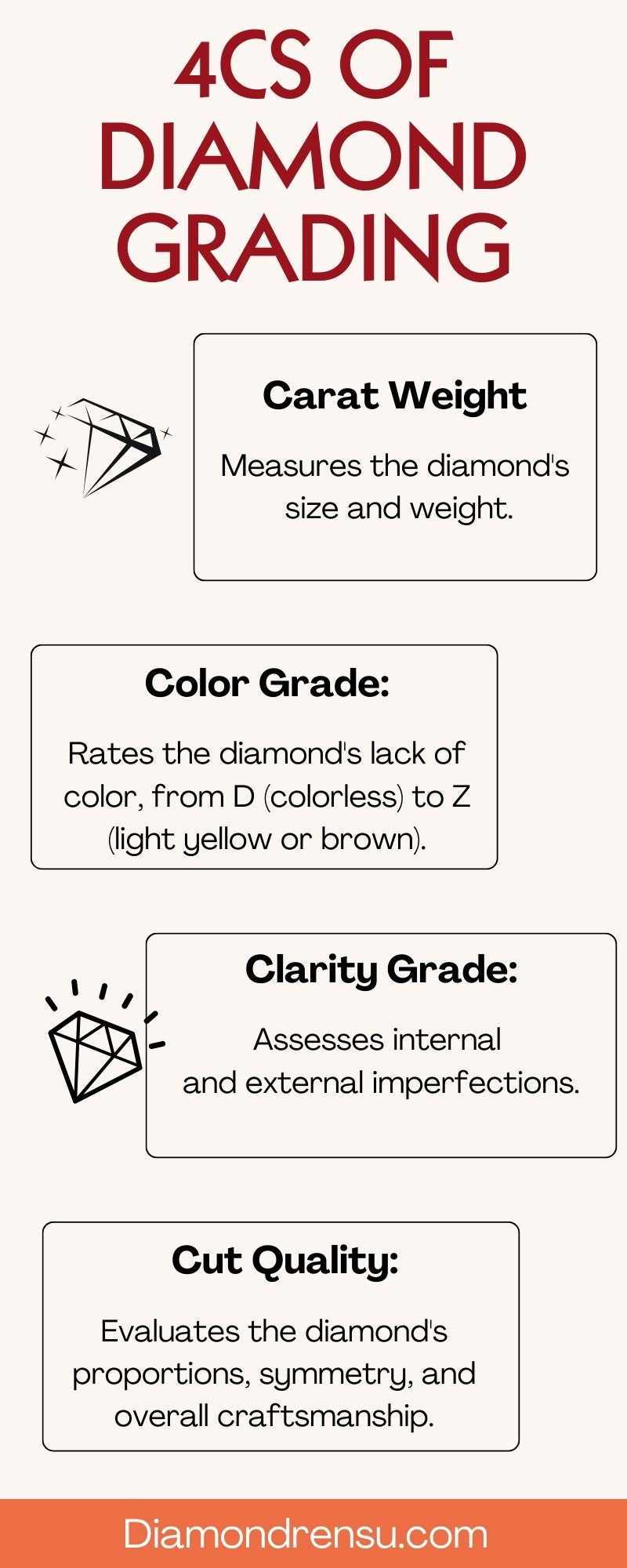
In this section, I'll detail the rigorously defined characteristics of an Old European cut diamond. I'll help you understand the intricacies of carat weight, color, and clarity, and the significance of GIA certification in authenticating these historical gems.
Carat Weight and Size
Carat weight: My examination reveals that the weight of an Old European cut diamond is measured in carats, with one carat equating to 0.2 grams.
- Size: It's crucial to note that carat weight doesn't always correlate directly to size. Instead, it's the specific proportions and the size of the small table that affect how large the diamond appears.
Color and Clarity Grades
- Color: When assessing color, I adhere to a certified color grade scale where diamonds are evaluated from colorless to light yellow. The prized Old European cut often exhibits a warmer hue, which is considered quite desirable among vintage diamond enthusiasts.
- Clarity: Clarity grade is another pivotal factor, ranging from flawless—free of inclusions or blemishes—to included, which may have visible imperfections. The unique faceting of the Old European cut can influence the perception of clarity due to its deep pavilion and open culet.
GIA Certificates and Authenticity
- GIA Certification: I recognize the importance of a GIA certificate, which verifies the diamond's authenticity and provides an unbiased assessment of its quality factors including weight, color, and clarity. A GIA-certified diamond is one that has been scrutinized by the Gemological Institute of America (GIA) for these precise parameters.
- Cut grades: Within the certificate, particular attention is paid to the diamond's cut grades and proportions, ensuring the Old European cut's standards are upheld.
Value and Investment Considerations
When considering an old European cut diamond as an investment, it's critical to assess its market demand, rarity, and how it stacks up cost-wise against other options like the modern round brilliant cut. I'll explore these factors in depth to ensure your decision is informed by a thorough understanding of where an old European cut diamond stands in today's market.
Market Demand and Rarity
Old European cut diamonds embody a charm reminiscent of the past, often appealing to those who appreciate vintage beauty. The rarity of these diamonds is derived from their hand-crafted nature, using artisanal techniques predating modern diamond cutting technology. Unlike mass-produced diamonds, each old European cut stone has a unique personality, often showcasing a distinctive inner fire and scintillation that is subtly different to the sparkle of modern cuts.
- Pros: Distinctive "fire" and vintage appeal
- Cons: Less precise than modern cuts; may not appeal to everyone
Rarity and demand for old European cut diamonds usually translate to higher value over time, making them potentially attractive for investment purposes.
Budget and Cost Comparison
Comparing the costs between old European cut diamonds and their modern counterparts involves considering the budget and what you're looking for in terms of modernity and brilliance.
Old European cut diamonds, while often more affordable than new diamonds due to their lesser demand, should be evaluated for their craftsmanship and fire, characteristics cherished by collectors and enthusiasts alike.
- Modern Round Brilliant: Recognized for its intense brilliance and maximum sparkle.
- Old European Cut: Celebrated for its distinctive look and deeper, historical scintillation.
For those on a tighter budget or seeking a diamond with character and history, an old European cut could be a wise choice. However, if modernity and the heightened sparkle of advanced diamond cutting technology is preferred, then a modern round brilliant may be more suitable.
Care and Maintenance of Old European Cut Diamonds

Old European cut diamonds require specific care to maintain their unique brilliance. I am meticulous when it comes to preserving the beauty and structural integrity of these precious gems.
Cleaning and Upkeep
To keep my Old European cut diamond sparkling, I follow a gentle but efficient cleaning routine.
I start by preparing a cleaning solution with lukewarm water and a drop of mild dish soap.
I soak the diamond for about 20 to 30 minutes, which helps to loosen any built-up grime.
Using a soft brush, I carefully clean around the diamond, paying close attention to the back of the gem where dirt can accumulate.
Rinsing thoroughly in warm water ensures that no soapy residue is left behind.
I always use a soft, lint-free cloth to dry the diamond to prevent any scratches or water spots.
-
Cleaning Solution Prep:
- Mix lukewarm water with a drop of mild dish soap.
- Soak for 20-30 minutes.
-
Steps for Cleaning:
- Gently brush with a soft brush.
- Rinse thoroughly with lukewarm water.
- Dry with a soft, lint-free cloth.
Repairing and Resizing
When my Old European cut diamond appears chipped or if the setting needs adjustment, I seek professional assistance from a skilled jeweler with experience in antique diamonds.
Resizing or repairing such a diamond requires expertise, particularly due to the unique cut and faceting patterns.
A good jeweler will assess the extent of the damage and recommend the best course of action, ensuring that the integrity of the diamond is not compromised during the repair or resizing process.
- Professional Repair Checklist:
- Identify a reputable jeweler with experience in antique diamonds.
- Discuss the intended repair or resizing to ensure understanding.
- Verify the jeweler's approach to maintain the diamond's integrity.
Cultural and Personal Significance
Symbol of Love
Diamonds are a symbol of enduring love and commitment, often used in engagement rings to represent the eternal bond between partners.
Status and Luxury
In many cultures, diamonds signify wealth, status, and luxury. They are associated with royalty and are used in exquisite jewelry pieces.
Spiritual and Healing
Some traditions believe that diamonds possess spiritual and healing properties, promoting clarity of mind and inner strength.
When I consider an old European cut diamond, I reflect on both its timeless appeal and its capacity to encapsulate personal expression. It represents more than just a style; it's a statement of individuality and heritage.
Symbolism and Sentiment
Old European cut diamonds are often seen as embodiments of the romantic past. With their soft, rounded edges and deep cuts, they evoke a sense of nostalgia, bringing to mind the classic elegance of eras gone by.
Each diamond reflects a unique story and, when given as a gift, these antique diamonds often symbolize unending love and the continuity of tradition.
To me, wearing an old European cut diamond is like wearing a piece of history—it connects me to the past in a tangible and sentimental way.
Individuality and Customization
The nature of an old European cut diamond lends itself to personal customization, allowing me to express my personality through bespoke jewelry.
Whether set in white gold for a contemporary twist or remaining true to its vintage roots in a classic design, these diamonds offer a distinctive alternative to the more common round diamond.
For those who prize originality, an old European cut is a standout choice, guaranteeing that my jewelry is as unique as my own personal story.
Technological Advancements in Diamond Cutting

The craft of diamond cutting has evolved tremendously with the integration of modern technology, enhancing precision and enabling the creation of captivating gemstones such as the modern round brilliant. My focus will delve into how these advances contrast with yesteryear techniques and how specific machines have transformed the craft.
Modern Techniques vs. Traditional Methods
In comparing modern techniques with traditional methods, it's clear that the precision and efficiency of diamond cutting have been revolutionized.
Traditional methods relied heavily on the skill of the diamond cutter, who used simple tools to shape antique cut diamonds like the old European cut diamond. This method was more prone to human error, and the diamonds often featured asymmetrical facets.
Modern technology introduces laser cutting and computer-aided design (CAD) which afford exceptional accuracy.
These advancements lead to the consistent production of the modern round brilliant diamonds, which are cut to exacting standards to maximize their brilliance, fire, and scintillation. The modern round brilliant cut has perfected proportions that reflect the most light possible, leading to greater desirability and value.
Brushing Machine and Precision
The brushing machine has become an integral part of achieving the high-level precision required in today's diamond cutting process. This machine plays a crucial role, especially during the bruting (also known as girdling) phase. Here, two diamonds are set to spin against each other to form a rough round shape.
The sheer accuracy and speed of a brushing machine surpass manual bruting techniques used in the past. It ensures uniformity and symmetry that define the quality of modern round brilliant diamonds. As for the facets, advanced faceting machines apply meticulous details to the pavilion, crown, and girdle of the diamond. This paves the way for the precise cuts that are iconic of the Art Deco period.
Comparative Analysis
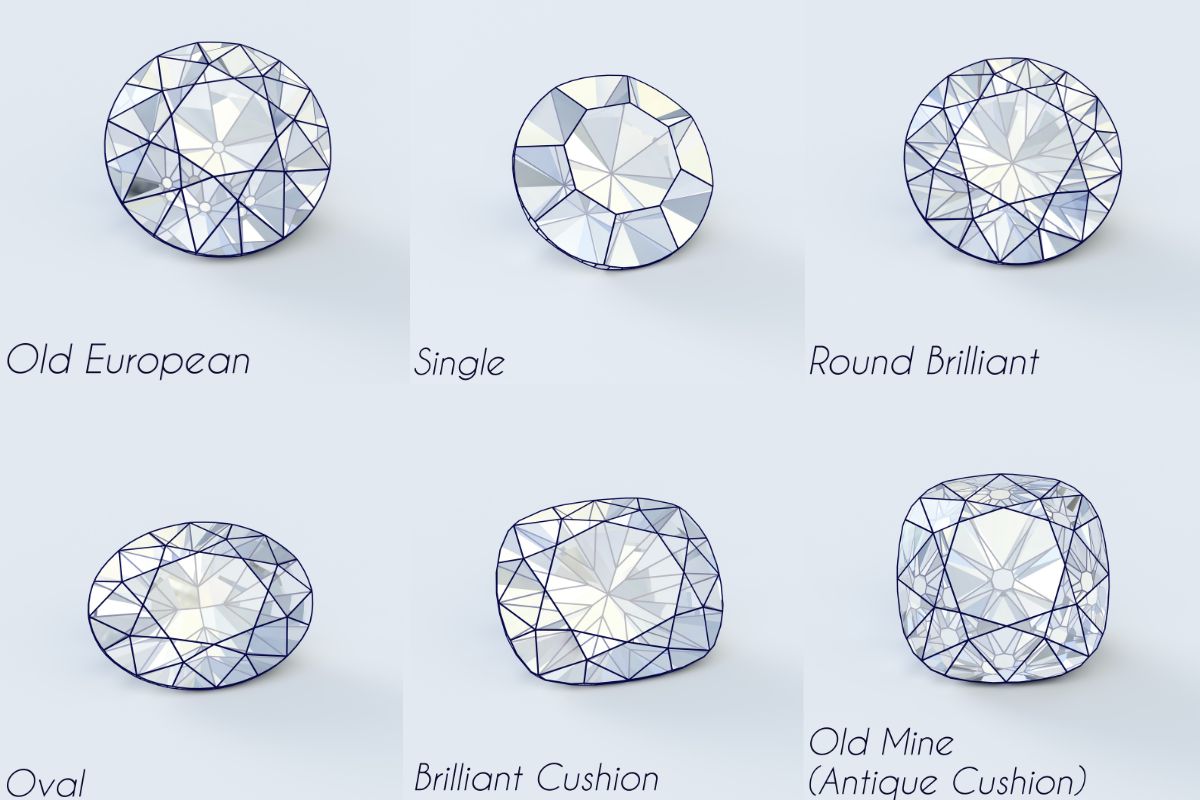
In this comparative analysis, I'll examine the distinctions between Old European cuts and more contemporary diamond shapes. Specifically, the focus will be on how the Old European cut differs from the Modern Round Brilliant and the Old Mine Cut. I'll emphasize factors like facet structure and light performance.
Old European Cut vs. Modern Round Brilliant
The Old European cut diamonds are the ancestors of Modern Round Brilliant diamonds. Characterized by their round shape with a high crown, small table, and large culet, they typically feature 58 facets, much like the Modern Round Brilliant. However, the key difference lies in their proportions: Old European cuts often have deeper pavilions and smaller table diameters, which affect how they interact with light. In contrast, Modern Round Brilliant Diamonds have been optimized for maximum brilliance. This is due to their precise cut, which is mathematically engineered to enhance light refraction and reflection. The brilliance of Modern Round Brilliants is often more pronounced due to this meticulous design.
Old European vs. Old Mine and Round Brilliants
When comparing Old European cuts to Old Mine cuts, the first thing I note is that both possess a squarish girdle with gently rounded corners, yet they diverge in facet patterns and overall symmetry. Old Mine cuts are typically more inconsistent in shape with a variety of facet sizes, which can give them a unique and charming appeal. Meanwhile, Old European cuts are seen as a step towards the more uniform and symmetrical Round Brilliant Cut popular today. Even though they share the same number of facets as modern diamonds, the old European cut's 58 facets are hand-cut. Thus, they do not showcase the same precision as modern cutting techniques applied to Round Brilliants. Consequently, Old European cut diamonds exhibit a different kind of fire and sparkle. It is less about the sharpness of the sparkle and more about the softness of the glow that emanates from within.
Sustainability and Ethical Considerations
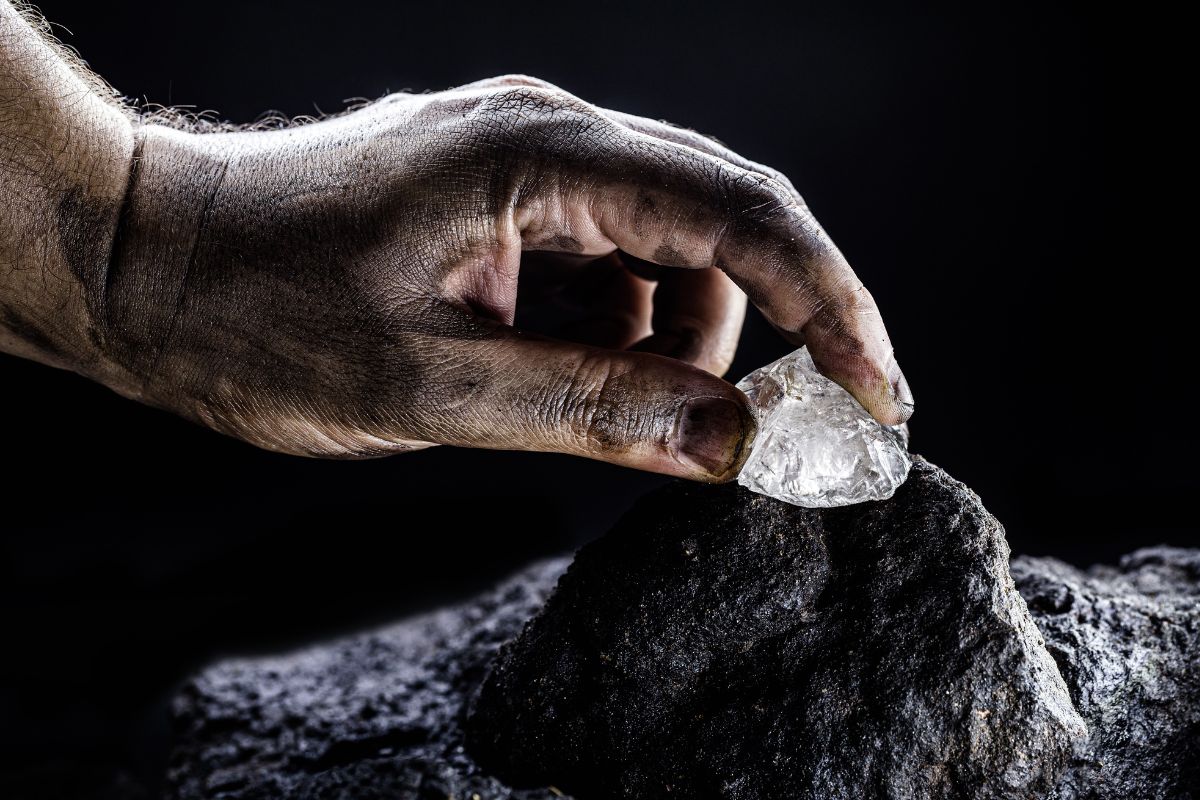
Sustainability and ethical considerations are critical when discussing old European cut diamonds. Both the origins of these diamonds and the methods used to procure them hold significant importance for socially conscious consumers.
Ethical Sourcing and Production
I am keenly aware that ethical sourcing of diamonds is paramount. This includes strict adherence to the Kimberley Process, aimed at preventing the trade of conflict diamonds, and ensuring that each old European cut diamond I discuss has been sourced responsibly. Ethical production also mandates fair treatment and compensation of all workers involved in the cutting and polishing processes.
Impact of Diamond Mining
The impact of diamond mining on the environment can be profound. I strive to promote awareness that sustainable mining practices are essential to minimize ecological damage. Sustainable practices include reducing the carbon footprint and restoring mined land. Companies involved in the ethical diamond market are typically more transparent about their operations. They often provide detailed reports on their efforts to mitigate environmental harm.
Future Trends and Evolution
As a connoisseur of gemstones, I've observed that the allure of old European cut diamonds extends into the present day and appears poised for further revival and innovation.
Continued Popularity and Revival
Old European cut diamonds have an intrinsic timelessness that has allowed them to retain popularity. Enthusiasts often seek these cuts for their handcrafted uniqueness and romantic glow. I've witnessed a revival movement where jewelers are repurposing vintage cuts for new jewelry, tapping into consumer desire for historic charm mixed with modern settings.
Innovation in Diamond Cuts
When considering innovation in the context of diamond cuts, there's a noticeable trend evolving where I see historic cuts like the old European being the inspiration for new cutting techniques. These innovations marry the artistry of the past with the precision of modern technology. They often aim to maximize brilliance or create unique light patterns. This fusion of tradition with future technologies suggests that the evolution of diamond cuts is far from over and will continue to intrigue and captivate.
Purchasing Channels and Vendors
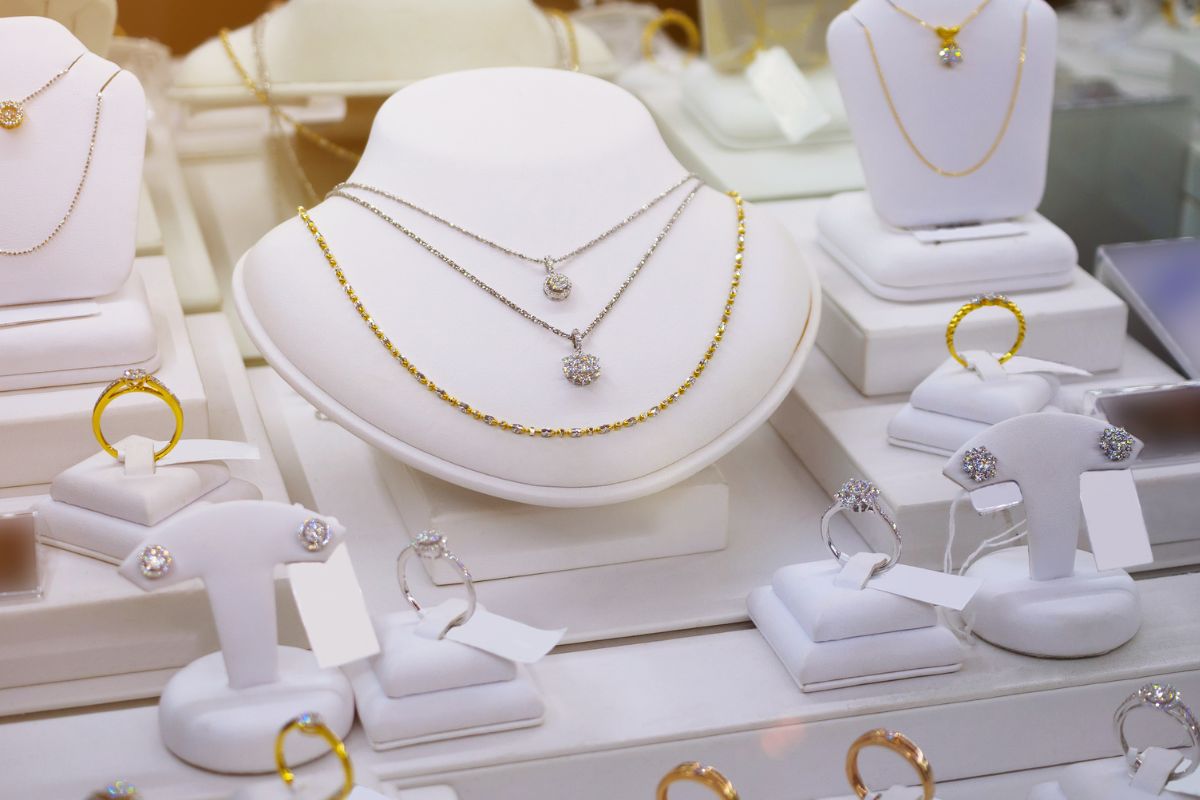
When I seek an Old European cut diamond, my preferences steer me towards reliable purchasing channels and vetted vendors. Navigating through the abundant options necessitates a clear understanding of where and whom to trust.
Online Retailers and Marketplaces
For convenience and variety, online retailers and marketplaces are my go-to options. I find Blue Nile particularly impressive for their extensive collection. Their platform allows me to filter choices by cut, clarity, carat, and color. Here’s how I typically approach them:
- Explore Inventory: Skim through their curated list of Old European cut diamonds.
- Customization Services: Utilize tools to design my own jewelry settings.
- Certification: Ensure each diamond is certified, safeguarding my investment.
Marketplaces offer competitive pricing due to lower overhead costs, which is always a point in their favor. However, I'm also wary of vendors without proper accreditation or customer service backing.
Specialty Jewelers and Boutique Shops
I also cherish the personalized service I receive at specialty jewelers and boutique shops. There's an undeniable allure to viewing diamonds in person and getting immediate responses to my inquiries.
- Expert Guidance: Engage with jewelers face-to-face for professional insights.
- Physical Verification: Examine the diamond's cut, color, clarity, and carat.
Despite the possibly higher price points, there's value in the assurance that comes from a tangible examination and the experience specialized boutiques offer. Whether I seek an established jeweler or a niche boutique, the reputation and expertise of the vendor are paramount in my final decision.
Also Read
Frequently Asked Questions
In this section, I'll address several commonly asked questions regarding old European cut diamonds, covering their value, uniqueness, rarity, characteristics, and how they differ from other diamond cuts.
How can one determine the value of an old European cut diamond?
The value of an old European cut diamond is gauged by its carat weight, clarity, color, and how well the cut reflects light. Expert appraisals are essential for an accurate assessment.
What differentiates an old European cut from a round brilliant cut diamond?
An old European cut diamond typically has a circular shape with a high crown, small table, and a large, flat culet. In contrast, the round brilliant cut is more refined with a smaller culet, larger table, and numerous precisely arranged facets for enhanced brilliance.
Are old European cut diamonds considered to be rare?
Yes, old European cut diamonds are considered rare, as they were mostly cut before the more precise technology used in modern cuts became prevalent.
What identifiable characteristics do old European cut diamonds possess?
Characteristics of old European cut diamonds include a soft, warm glow, large facets that result in a distinctive sparkle, and a deep pavilion contributing to their unique charm.
How can one distinguish an old European cut diamond from similar cuts?
One can distinguish an old European cut diamond by its round shape, chunkier appearance, and the presence of a culet that is visible when looking down through the table.
What is the distinction between an old mine cut and an old European cut diamond?
The main distinction between an old mine cut and an old European cut diamond is their shape. Old mine cuts are more squarish with rounded corners, while old European cuts are more circular. Additionally, old mine cuts have a more uneven and rustic appearance compared to the old European cut’s more symmetrical form.
Checkout some of our top collections:
- Moissanite Engagement Rings
- Moissanite Earrings
- Moissanite Bracelets
- Moissanite Solitaire Engagement Rings
- Moissanite Mens Engagement Rings
- Moissanite Princess Cut Stones
- Lab Grown Engagement Rings
- Lab Grown Diamond Earrings
- Lab Grown Diamond Wedding Bands
Leave a comment
Please note, comments must be approved before they are published.

